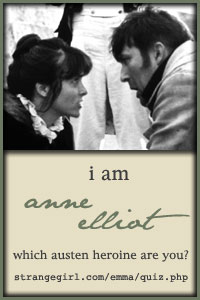Today marks the Italian Feast of La Befana which brings the winter holidays to a close. There are a number of different versions of the Befana story, the most popular being the story of a rather unattractive (the word ugly is used repeatedly) old woman busily cleaning her house when she is interrupted by a knock at her door. The three wise men, on their way to find the baby Jesus, stop to ask for directions - why they stop at Befana's door for these directions is not mentioned. She could not help them but was invited to go along anyway. She declines the invitation, the most popular reason being she had to finish her housework. The wise men then go off on their way. La Befana thinks while she works and comes to regret her decision not to join them. She gathers up her own gifts, lots of sweets, for the baby Jesus and sets off thinking to catch up with the wise men. She never finds them nor does she find the infant Jesus and so wanders the world giving sweets to good little children.
Befana is generally portrayed as elderly, dressed in rags, because her wanderings have taken their toll on her clothing, flying on a broomstick and very sooty from entering homes through the chimney. Does this sound familiar???
Another theory suggests that this little old woman may be a remnant of the Sabine/Roman goddess, Strina/Strenia.
This Befana appears to be heir at law of a certain heathen goddess called Strenia, who presided over the new-year's gifts, 'Strenae,' from which, indeed, she derived her name.[4] Her presents were of the same description as those of the Befana—figs, dates, and honey.[5] Moreover her solemnities were vigorously opposed by the early Christians on account of their noisy, riotous, and licentious character. (Vestiges of Ancient Manners and Customs, Discoverable in Modern Italy and Sicily by Rev. John J. Blunt (John Murray, 1823))
So who is Befana really? Talitha Dragonfly, in an article written for Witchvox, has the following to say:
Some people say that La Befana’s name comes from a mispronunciation of the Italian word epifania (epiphany) , or the Greek epi-fanea, because her sacred day is held on the eve of the Christian Epiphany. The word epifania, curiously, originally referred to a “manifestation of moon light”.
Others say that her name is a derivative of Bastrina, gifts sacred to the Goddess Strina. Strenae, evergreen branches, were exchanged as token gifts around the time of the Winter Solstice to honor the feast day of this Goddess. Children were given gifts of figs, dates, and honey.
La Befana is seen as a “good witch”. She visits all of the children on the eve of January 6th, arriving on her broomstick. She is a smiling Crone who wears a black shawl covered in soot because she enters the children’s homes through the chimney. She carries a bag over her shoulder filled with candy, dried fruit, small gifts, and coal. She will fill children’s socks with the treats if they have been good, or with lumps of coal if they have been bad. Because she is a wise and tidy housekeeper, she will sweep the floor with her broom before she leaves. The children’s parents will leave La Befana an offering of thanks. This may be a glass of local wine, or a plate of food.
La Befana is portrayed as an old woman to highlight the archetypal links between Mother Earth lending us Her bountiful fruits and then withering away into slumber as winter approaches. Even the lumps of coal she brings to the naughty children and the ashes covering her shawl are symbolic of this. She returns in the Spring as the youthful maiden, ready to begin the Wheel of the Year once again.
I also found this information, which seems to reinforce this theory:
The Roman strenae offered to the Emperor or exchanged between private citizens at the January Kalends have already been noted. According to tradition they were originally merely branches plucked from the grove of the goddess Strenia, and the purpose of these may well have been akin to that of the greenery used for decorations, viz., to secure contact with a vegetation-spirit. In the time of the Empire, however, the strenae were of a more attractive character, "men gave honeyed things, that the year of the recipient might be full of sweetness, lamps that it might be full of light, copper and silver and gold that wealth might flow in amain [exceedingly]." Such presents were obviously a kind of charm for the New Year, based on the principle that as the beginning was, so would the rest of the year be.
With the adoption of the Roman New Year's Day its present-giving customs appear to have spread far and wide. In France, where the Latin spirit is still strong, January 1 is even now the great day for presents, and they are actually called etrennes, a name obviously derived from strenae. In Paris boxes of sweets are then given by bachelors to friends who have entertained them at their houses during the year - a survival perhaps of the "honeyed things" given in Roman times. (Excerpted from Christmas in Ritual and Tradition, Christian and Pagan, by Clement A. Miles, London: T. Fisher Unwin, 2nd Ed. 1913)
Yes indeed, it sounds like it might be the origins of the legend. However, we cannot know for sure and I don't think it matters. For me, Old Befana is the winter crone, the Great Grandmother, the Old Wise One. She is the one who sits beside the fire in that special place I journey to, offering wisdom, tea and threads for me to stitch magic and healing with. She is there beside me whenever I have need of advice.
In Befana, I find the Crone of Crones, perhaps Dame Fate Herself, The Great Mother of us all.
Blessings Nine!





